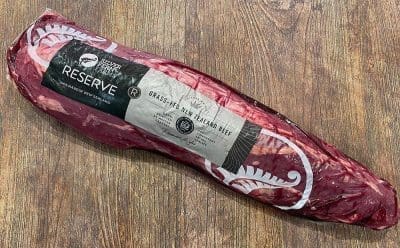New Zealand beef is flowing into Australia in larger quantities, in part due to domestically-produced wholesale beef prices hitting new record highs, in line with the booming cattle market.
While price-competitive, NZ beef imports to Australia tend to be highly seasonal, and often opportunistic – coinciding with spikes in domestic meat prices in Australia.
Governed by tight BSE and FMD disease management protocols, New Zealand is one of only four overseas countries currently eligible to export beef to Australia. Both NZ and Vanuatu carry the OIE’s same ‘least-risk’ BSE rating as Australia. Japan re-commenced high-quality Wagyu exports in extremely small volumes in 2018, after a lengthy ban. Click here to view earlier article on Japanese beef’s return to Australia three years ago.
As highlighted in yesterday’s wholesale meat market summary, wholesale beef prices have soared to new record highs over the past month, driven by record high cattle prices caused by supply shortage across Australia.
New Zealand’s PS-graded product (equivalent to Australian 0-2 tooth YG or 0-4 tooth YP cipher steer and heifer beef) appears to be making up the majority of chilled grassfed loin cuts coming into the country at the moment, based on comments from importers and wholesalers spoken to for this report. Popular cuts being imported included rumps, cube-rolls, tenderloins and denuded topsides.
“It certainly is not low quality dairy cow meat – it is as good as much of Australia’s MSA young beef,” one wholesale contact said this morning.
“Most of it ends up in catering and pub meals and markets like that – it’s not so much higher-end food service.”
Current Australian wholesale prices for NZ imported beef are around $1/kg to $2/kg cheaper for cube-rolls or TDRs than what could be described as equivalent Australian-produced product – enough to incentivise some food service customers who are reeling under the weight of record-high beef prices to ‘have a look’. For other cuts like denuded topsides, the current price differential was much less – only about 20-30c/kg.
David McNally from Australia Wholesale Meats said import volume had certainly risen recently, but it had in fact been higher than usual for the past year.
“Remember that NZ supply is very seasonal. When summer approaches, it starts rolling in again, as NZ production gains pace.”
“But certainly, the extreme price of Australian meat in the wholesale market at present is a factor.”
Mr McNally said the low level of availability of Australian domestic meat due to extremely low national rates of slaughter was also a factor – especially in the ‘sweet’ cuts (middle and loin meats).
“We simply can’t get enough of the better graded loin cuts in Australia at the moment,” he said.
“And other items like denuded topsides, which take a bit more work to produce, have become very difficult to get in Australia – mostly because of the lack of labour in processing to do the work,” he said.
Product out of major NZ processors like Silver Fern, AFFCo or Alliance was prominent in the market at present.
“NZ beef in Australia is always very seasonal, and price-sensitive. You can go a couple of years and not see much in the market at all, but just now, it is more evident,” Mr McNally said.
Rising volume
Importer Rowan Trading out of Sydney told Beef Central that while it had imported NZ beef over the past 20 years, volume had risen recently.
“We have a long-term regular client base in manufacturing and food service that uses and likes the NZ product, but given the current market conditions in Australia, we are also seeing new inquiries coming out of the woodwork,” a spokesman said.
“Customers are looking for a cheaper alternative within the same protein, or another protein to work with, or trying to do something a little bit different.”
“The end of COVID lockdowns in Melbourne and Sydney means people want to go out to eat, and that is fuelling this demand as well,” the spokesman said.
Another wholesaler suggested shelf-life on the imported NZ product was not always as good as Australia’s performance, but it depended in the packer.
“Certainly NZ hot-boned product is inferior for shelf-life, but the cold-boned product out of a good NZ packers like Silver Fern or AFFCo is similar to Australia’s.”
He said the inferior hot-boned product was easily distinguished, because primals were wrapped in cling-wrap inside the cryovac bag, to hold their shape.

